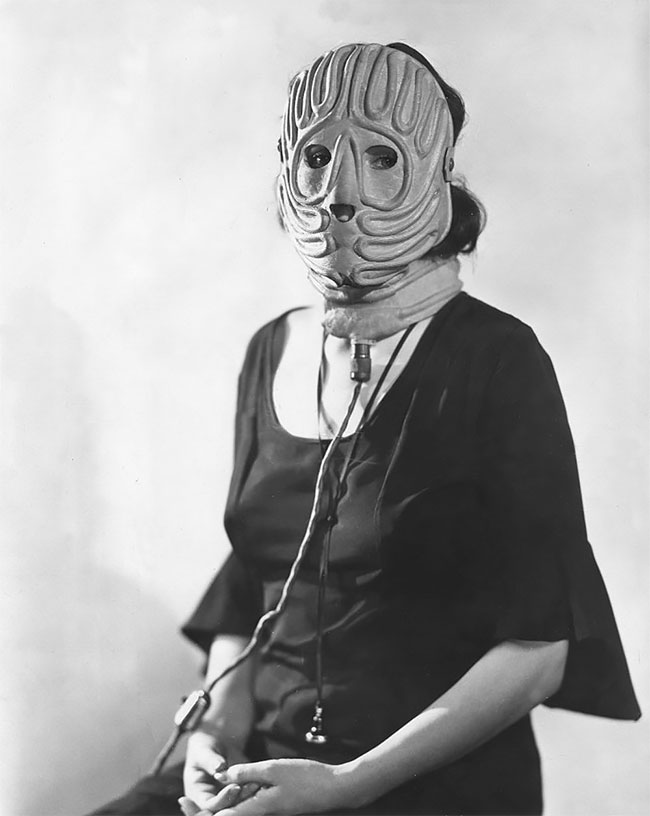Diathermy in Beauty Culture From From the 1930s
Coin-operated diathermy machine. Pay your 25 cents and stick a hot, germy mask on your face that hundreds of others have sweated into beforehand!

When the term diathermy is used in beauty culture it usually refers to ‘surgical diathermy.’ Diathermy treatments of this type – also known a thermolysis – were used from the 1930s onwards in beauty culture as an alternative to electrolysis for the permanent removal of superfluous hair, spider veins (telangiectasia), acne, warts, moles and other skin blemishes.
h/t: vintag.es
High-frequency diathermy could be replaced with a simple heating pad. This mask appears to be a Thera Therm Electro-Velour face mask. Introduced around 1938, it was operated by an adjustable heating pad, similar to those used in electric blankets.

High-frequency currents have also been used in beauty treatments to warm the face and body as with ‘medical diathermy’. The first use of diathermy in this manner in beauty culture, was Elizabeth Arden’s Vienna Youth Mask. Introduced in 1928, it was claimed to have a rejuvenating effect by stimulating the circulation of blood through the facial tissues.
Surgical diathermy treatment, possibly for pimples or acne, 1933.

Other salons followed Arden’s lead and facial treatments incorporating diathermal heat became quite common in the 1930s, in part because the machines could also be used to remove hair through thermolysis:
“Treatment begins by cleansing the face, which is then dried with tissue and the mask applied. The chin electrode is first fixed in place by an adjustable rubber strap. In similar manner, double cheek electrode bands and the forehead electrode band is fixed. The cables, which are heavily insulated, are then attached and circuits closed. The resulting sensation is a pleasant, deep-reaching warmth; the consequence of a 10 minutes controlled application is a thorough enduring stimulation of skin and sub-cutaneous tissues. This intensive stimulus is not to be achieved by massage, or any available lotion, and is under full control of the operator. (The Hairdresser and Beauty Trade, 1936)”
Silk mask and electrode method, 1936.

Mention should also be made of indirect high-frequency treatments, also known as a Viennese massage. These combined a facial massage with a high-frequency current to heat the skin under the therapist’s fingers.
Surgical diathermy treatment to coagulate acne pustules, although the model in this photograph does not look like she has an acne problem, 1939.

Although there are some salons today that offer warming diathermy treatments as a ‘circulation booster’ during a facial, these are not typical. A more common and more recent use of ‘medical diathermy’ in beauty culture has been in cellulite treatments. Although it is generally combined with other procedures rather than used in isolation, the deep heat produced by diathermy has been claimed to enhance collagen production; increase blood circulation through vasodilation; improve lymphatic drainage of trapped fatty deposits; and even break down fat cells.
A rubber mask contained a series of heating coils that would allegedly “melt away” fine lines and wrinkles, 1939.


